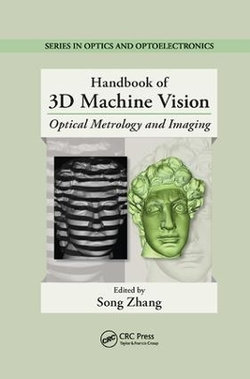The handbook begins with the well-studied method of stereo vision and explains how random speckle patterns or space-time varying patterns substantially improve the results of stereo vision. It then discusses stereo particle image velocimetry as a major experimental means in fluid dynamics, the robust and easy-to-implement structured-light technique for computer science applications, digital holography for performing micro- to nanoscale measurements, and grating, interferometry, and fringe projection techniques for precisely measuring dynamically deformable natural objects.
The book goes on to describe techniques that do not require triangulation to recover a 3D shape, including time-of-flight techniques and uniaxial 3D shape measurement, as well as 3D measurement techniques that are not restricted to surface capture, such as 3D ultrasound, optical coherence tomography, and 3D endoscopy. The book also explores how novel 3D imaging techniques are being applied in the promising field of biometrics-which may prove essential to security and public safety.
Written by key players in the field and inventors of important imaging technologies, this authoritative, state-of-the-art handbook helps you understand the core of 3D imaging technology and choose the proper 3D imaging technique for your needs. For each technique, the book provides its mathematical foundations, summarizes its successful applications, and discusses its limitations.




Share This Book: